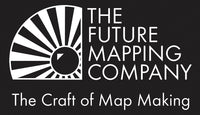Lithographic Printing
At The Future Mapping Company, we love the look and feel of our maps as much as the information we’re displaying.
This is why we’ve scoured the UK and Europe for the best printers who can translate our vision to paper. Unfortunately the UK printing industry has declined so sharply that we often can’t find the expertise at home, as much as we would love to. So we print our maps between the UK and Germany – where they still have printing presses large enough to produce our huge Future Maps.
Lithography (coming from the Greek words ‘stone’ and ‘to write’) is based on the theory that oil and water do not mix and was invented in the 18th Century by Alois Senefelder, a German author who discovered it by chance and used it as a mass reproduction technique for his plays.


Originally, an image was drawn with wax or oil onto a smooth limestone plate. This was then treated with a mix of acid and gum arabic that etched away the part of the stone not covered with the oil based image. When the stone was wetted, the etched areas held the water meaning that an oil based ink could be applied which would pick up the image, ready to transfer to paper.
In the modern world, aluminum plates have replaced the stone and a polymer is applied instead of wax but the principle remains the same. Offset lithography, which we use, has been developed which sees the image transferred to a rubber sheet ready for multiple copies.
Lithographic printers have been a haven for artists keen to use other techniques to express themselves; often in a collaborative process with the master printer who’s experience of colour mixing brings a new element to the work. As explained by the UK’s most famous printmaker Stanley Jones MBE - lithography is the ‘most painterly of print techniques, the charm is the mix of the human hand and technology.’ Watch this fascinating step by step guide showing how colours are built up to form the final print.
Traditionally maps were produced using engraving – however this was highly labour intensive, which made them expensive and exclusive. The advent of lithograph printing made maps more democratically available in the 19th Century. The father of lithography, Senfelder, even became involved in lithographic cartography as he was appointed the head of the Bavarian Cadastral Survey in 1809 – supervising hundreds of different geographical, political and taxation maps.
Our maps are printed using the offset method from plate onto roller, then onto sustainable paper sheets (ECF paper certified by the FSC).
You can see how the whole process works in this photographic study of one of our printing trips, and we asked The Future Mapping Company’s founder Marcus about his dedication to lithographic printing:
What is special about lithographic printing?
Lithographic printing is a real craft, we love the fact that we can use special inks, including luminous and metallics that cannot be achieved with regular digital printing. Add the amazing definition it produces and the end product is really eye catching.
How do you see your role and that of the printers?
It's very much a team affair; everyone has to do their job well to get a good result. It is a lot more complex printing this way and any number of things can go wrong. We have to get the artwork prepared in a manner that allows all the inks to be layered correctly and the printers have to use their experience of paper, ink and the machine to get the finished result. Although massive, expensive machines are being used it is most definitely a craft - the result is down to the craftsmen who operate them.
How does it feel when you've set the press up and you're waiting for the first map to come out?
Our maps can take up to 6 months to develop and you never get an exact idea of what will come out by looking at the image on screen or even by a digital proof. So you never really now whether it is going to work or not until you print it so the feeling is definitely one of nervous excitement!
Do you think digital printing is killing traditional methods like lithography?
Digital printing is making big strides forward to be able to achieve many of the qualities that lithographic printing is known for. But, from what I have seen, the finished product is almost too slick which loses a bit of character. It's like a hand tailored suit; there is beauty in the slight imperfections achieved with lithographic printing. Digital printing has its place but nothing will ever replace a hand-crafted map.







